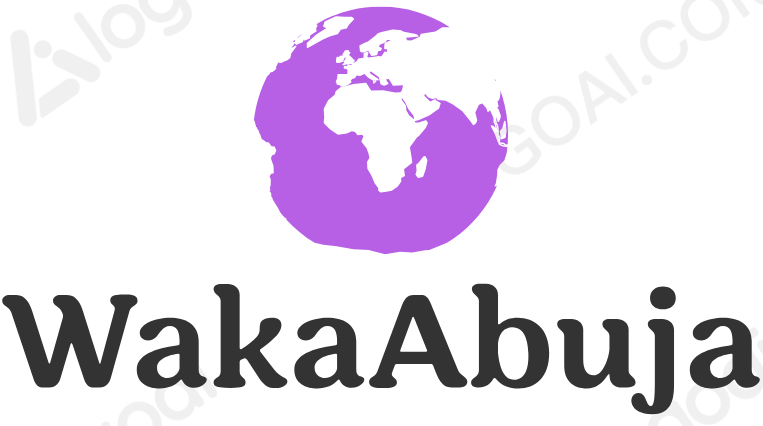How to Start a Blog: Insights from a Travel and Lifestyle Entrepreneur
It can be quite rewarding to start a blog, especially if you are interested in travel or lifestyle. To kickstart your blogging career, I’m sharing my journey, insights, and the essential steps you need to take to build a seven-figure business. This guide will help you set the right path, whether your goal is to inspire others, share your adventures, or build a lucrative business.
Why Blog? The Power of Blogging in Today’s World
Before diving into the how-to, let’s explore why blogging is such a powerful medium today. Blogging allows you to:
- Share Your Passion: Whether it’s travel, food, or fashion, a blog is an excellent platform to express your interests.
- Build a Community: Engage with like-minded individuals who share your passions.
- Generate Income: With the right strategy, blogging can become a significant source of income through various monetization avenues.
- Enhance Your Skills: Blogging improves your writing, photography, and digital marketing skills.
Key Takeaways
- Blogging combines passion and entrepreneurship.
- It allows for creativity while building a community.
- With dedication, it can become a profitable venture.
Step 1: Define Your Niche
Choosing a niche is crucial to your blogging success. It determines your target audience and the content you’ll create. Here’s how to select your niche:
Personal Passion and Expertise
Reflect on what excites you. As a travel blogger, my love for discovering new cultures and sharing unique experiences formed the foundation of my blog. Consider these questions:
- What topics do you enjoy discussing?
- What experiences can you share that others might find valuable?
- Are you knowledgeable about any specific areas, like budget travel or culinary adventures?
Market Demand
Research popular topics in the blogging sphere. Use tools like Google Trends and Keyword Planner to gauge interest levels. For instance, travel blogs focusing on sustainable tourism are currently trending.
Pros and Cons of Niche Selection
| Pros | Cons |
|---|---|
| Establishes authority in a specific area | May limit potential audience size |
| Attracts a dedicated following | Might require more focused research |
| Easier to monetize | Can be oversaturated with competition |
Key Takeaway
Choose a niche that aligns with your passion and has a market demand to ensure long-term sustainability.
Step 2: Choose a Blogging Platform
Now that you have your niche, it’s time to select a blogging platform. Here are a few popular options:
WordPress.org
This is the most widely used platform, offering flexibility and control. You’ll need a hosting service, but the investment pays off in customization options.
Squarespace
An all-in-one solution, Squarespace is user-friendly and aesthetically pleasing. It’s perfect for those who want to focus on design without worrying about technical details.
Wix
Wix offers an easy drag-and-drop interface, making it suitable for beginners. However, it may lack some advanced features.
Key Takeaway
For long-term growth and control, I recommend using WordPress.org. It provides endless customization options, which is crucial for creating a unique brand.
Step 3: Pick a Domain Name
Your domain name is your blog’s identity. Choose a name that is:
- Memorable: Make it easy to remember and spell.
- Relevant: It should reflect your niche or what you’ll be blogging about.
- Short and Sweet: Aim for brevity to make it easy to type.
Examples
For my blog, I chose a name that reflects my love for travel and exploration. Here are some tips to brainstorm:
- Use keywords related to your niche.
- Consider using your name or a unique phrase.
- Check availability on domain registrars like GoDaddy or Namecheap.
Key Takeaway
A good domain name is integral to your brand. Take time to find one that resonates with your audience.
Step 4: Set Up Hosting
A reliable hosting provider is essential for your blog’s performance. Here are some popular options:
Bluehost
Recommended by WordPress, Bluehost offers excellent customer support and affordable plans.
SiteGround
Known for its fast performance and top-notch customer service, SiteGround is another great choice.
Key Takeaway
Choose a hosting service that fits your budget but doesn’t compromise on reliability. Good hosting will ensure your blog is always accessible.
Step 5: Design Your Blog
Your blog’s design should reflect your personality and niche. Here are some tips:
Choose a Theme
Select a theme that is both functional and visually appealing. For WordPress, consider themes like Divi or Astra.
Customize Your Layout
Personalize your theme with colors, fonts, and layouts that resonate with your brand. Use Canva for creating unique graphics and images.
User Experience (UX)
Ensure your blog is easy to navigate. Organize content into categories and maintain a clean, clutter-free design.
Key Takeaway
A well-designed blog enhances user experience, keeping visitors engaged and encouraging them to return.
Step 6: Create Quality Content
Content is the heart of your blog. To build authority and engage your audience, focus on creating high-quality, valuable posts.
Types of Content
- Guides: In-depth posts that provide step-by-step instructions.
- Lists: Curated lists that offer quick insights, like “Top 10 Travel Destinations.”
- Personal Stories: Share your experiences to connect with readers on a personal level.
Writing Tips
- Be Authentic: Write in your voice, sharing personal anecdotes that resonate with your audience.
- Use Engaging Visuals: Incorporate high-quality images, infographics, and videos to enhance your content.
- Optimize for SEO: Use relevant keywords, meta descriptions, and alt text for images to improve search visibility.
Key Takeaway
Quality content builds trust with your audience and establishes your blog as an authoritative resource.
Step 7: Promote Your Blog
Once your content is live, it’s time to promote it. Here are effective strategies:
Social Media Marketing
Utilize platforms like Instagram, Pinterest, and Facebook to share your posts and engage with your audience. Create visually appealing content that draws in followers.
Email Marketing
Build an email list from day one. Use services like Mailchimp or ConvertKit to send newsletters and updates, driving traffic back to your blog.
Collaborate with Other Bloggers
Guest posting on established blogs in your niche can introduce you to new audiences. Network within your blogging community and collaborate on projects.
Key Takeaway
Promotion is as important as content creation. Utilize multiple channels to reach a wider audience.
Step 8: Monetize Your Blog
As your blog grows, explore monetization options to turn your passion into profit. Here are some avenues to consider:
Affiliate Marketing
Promote products or services related to your niche and earn a commission for each sale made through your links. Sign up for affiliate programs like Amazon Associates or niche-specific networks.
Sponsored Content
Collaborate with brands for sponsored posts. Make sure to choose partnerships that align with your audience’s interests to maintain authenticity.
Create Your Own Products
Consider creating eBooks, courses, or merchandise that align with your niche. For instance, I launched a travel photography course that resonated with my audience.
Key Takeaway
Diversify your income streams to maximize your blog’s revenue potential.
Step 9: Analyze and Optimize
To ensure long-term growth, regularly analyze your blog’s performance using tools like Google Analytics. Here’s what to focus on:
Track Visitor Behavior
Understand where your traffic comes from and which content resonates most with your audience.
Optimize Your Content
Regularly update older posts to keep them relevant. Refreshing content can significantly boost traffic.
Set Goals
Define specific, measurable goals for your blog. Whether it’s increasing traffic or revenue, setting benchmarks helps you stay focused.
Key Takeaway
Regular analysis helps you adapt and optimize your strategy for continuous growth.
Frequently Asked Questions (FAQs)
How long does it take to start a blog?
Starting a blog can take as little as a day. However, building a successful blog takes time, effort, and consistency.
Do I need technical skills to start a blog?
No, many blogging platforms are user-friendly and designed for beginners. You can learn as you go.
Can I blog for free?
While free platforms exist, I recommend investing in a self-hosted blog for greater control and professionalism.
Conclusion
Starting a blog is an exciting journey filled with opportunities to share your passion and connect with others. By following these steps and remaining dedicated to creating valuable content, you can build a successful blog that resonates with your audience and reflects your unique voice.
Remember, it’s about enjoying the journey and sharing your experiences. As you embark on this adventure, keep learning, experimenting, and adapting. Your blog can not only inspire others but also become a thriving business that showcases your passion for travel and lifestyle.
Final Key Takeaway
Take the leap, stay consistent, and let your passion shine through your blog. Your unique perspective can inspire countless others!








